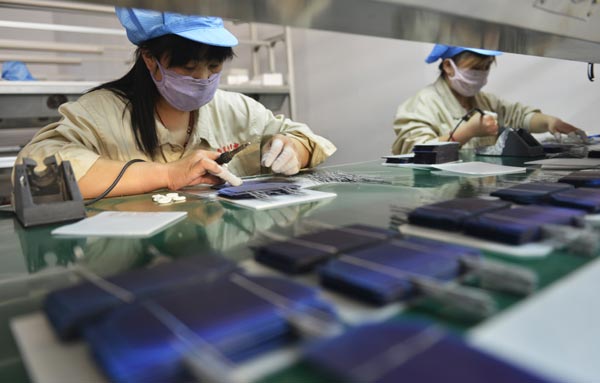|
 |
|
Workers soldering components at Hilight Solar Co Ltd, Zouping county, Shandong province. The private sector has become the driver of job creation in China. [Photo/China Daily] |
China will be the focus of many boardroom discussions around the world next year. What will be at the center of these conversations? I believe that it will be a debate about Chinese consumers and how they will behave in a slowing economy and, ultimately, the extent to which they will be the driver of economic growth over the next few years. Let me elaborate.
Wages
This year will likely see the lowest annual income growth in China for at least a decade, with knock-on implications across the economy. Early signs are already there. Government data show urban disposable income rose in single digits year-on-year in the first nine months of 2014, a hint at the big shift that is under way.
The vast majority of the economy has seen double-digit wage growth for the past decade, with the minimum wage in many cities doubling in less than five years. This has created an expectation that this is simply the new normal for income growth. It is not.
As a result, workers are pricing themselves out of the market. For example, International Monetary Fund research in China suggests that a 10 percent increase in the minimum wage leads to a 1 percent fall in employment.
The manufacturing sector provides a telling example. Manufacturing wages are up fourfold in dollar terms over the past decade. In recent years, private-sector enterprises have had to agree to annual wage increases three to four percentage points higher than State-owned enterprises in order to narrow the significant pay differential that had developed by 2010.
The challenges for low-skill assemblers in Guangdong and Zhejiang provinces have been well-documented. They are downsizing, as countries from Bangladesh to Kenya gain share. The cost of technology that substitutes for labor in factories has plummeted, displacing more workers.
Chinese assembly lines now bear no resemblance to those of a decade ago. Employers are under enormous short-term pressure to reduce wage costs amid ongoing weakness in the Purchasing Managers Indexes and persistent deflation in producer prices.
